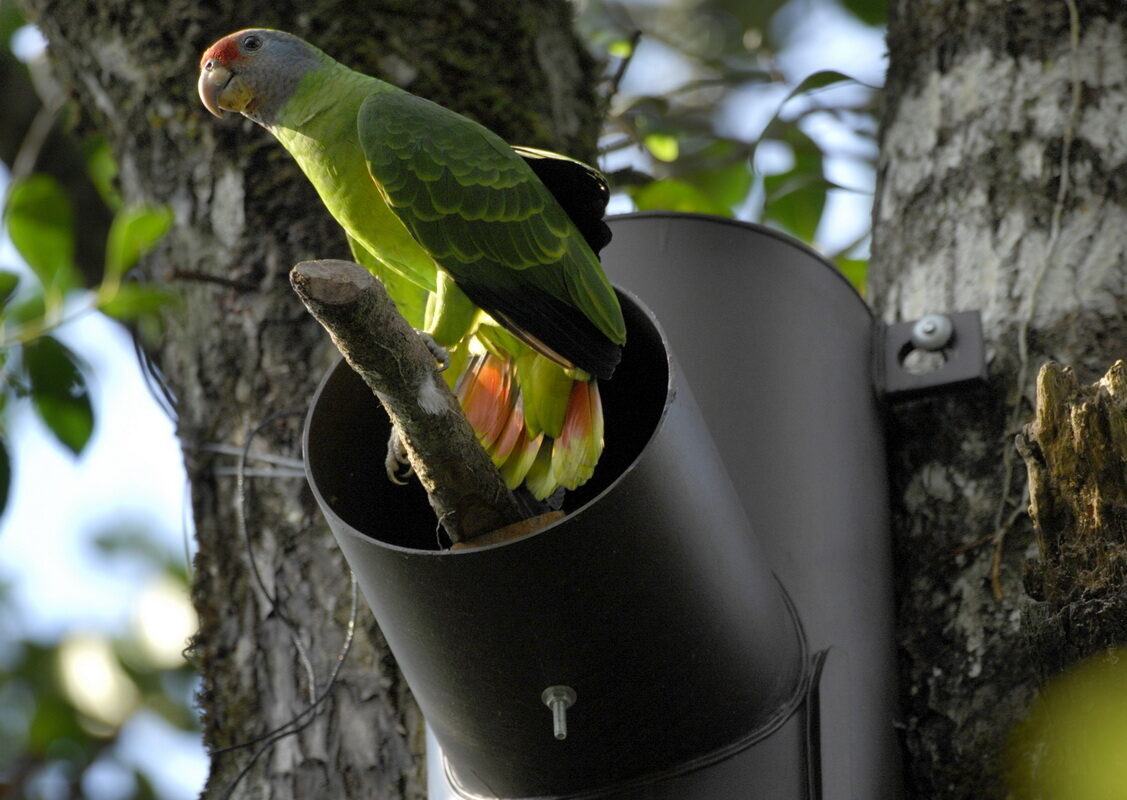Brazil’s red-tailed amazon parrot is a rare success story for reviving a species heading toward extinction, Mongabay Brasil’s Xavier Bartaburu reports. By the end of the 20th century, the population of the red-tailed amazon (Amazona brasiliensis) had dwindled to fewer than 5,000 individuals in Brazil’s Atlantic Forest, one of the most endangered biomes in the world. The birds depend on guanandi trees for their fruit and natural trunk hollows for nesting. However, along with 88% of the Atlantic Forest, many of the trees were cut down and harvested for their sturdy wood. The red-tailed amazons themselves were, and still are, targeted for the illegal wildlife trade and local consumption. In remote areas such as Rasa Island, off the southern state of Paraná, locals put glue on trees to catch the parrots for sale or to eat, local fisherman Antonio da Luz dos Santos told Bartaburu. The Society for Wildlife Research and Environmental Education (SPVS) identified Rasa Island as an ideal location for conservation as it hosts both resting and breeding habitat for the birds. However, SPVS was initially not welcome by many residents. “I was one of those against SPVS here on the island. I said that if they came here, I’d shoot,” said Eriel “Nininho” Mendes. His trees full of fruit were being eaten by the parrots, and many people didn’t want to be barred from hunting. Nonetheless, SPVS began conservation efforts on the island, employing local people to address the limited number of guanandi by building artificial nests…This article was originally published on Mongabay
From Conservation news via this RSS feed


